A Comprehensive Guide to Selecting Self-Drilling Anchor Bolts for Construction Projects
Time:2023-08-18From:sinorock View:
Selecting the right self-drilling anchor bolts is a crucial step in ensuring the stability and longevity of construction projects. Sinorock, with years of experience in producing self-drilling anchor system, understands the challenges builders face in this process. This article aims to provide some insights and tips for choosing the appropriate self-drilling anchor bolts based on various factors, from geological conditions to project type and equipment considerations.Introduction to Self-Drilling Anchor System
Self-drilling anchor system are innovative and efficient construction components that combine drilling, grouting, and anchoring functions into a single integrated system. These rock anchor bolts are designed to simplify the installation process, reduce construction time, and enhance the stability of structures in various geological conditions. A self-drilling anchor bolt typically consists of several essential components, each playing a critical role in its performance:
1. Threaded Hollow Anchor Bar
The threaded hollow anchor bar forms the core structural element of the whole self-drilling anchor system. It provides the necessary load-bearing capacity and is designed to resist tension forces. The thread pattern on the rod allows for easy attachment of drill bits, nuts, plates, and other components. Self-drilling anchor bolts can be categorized based on their threading patterns. Two common types include R-Thread Self-Drilling Anchor Bolts and T-Thread Self-Drilling Anchor Bolts.
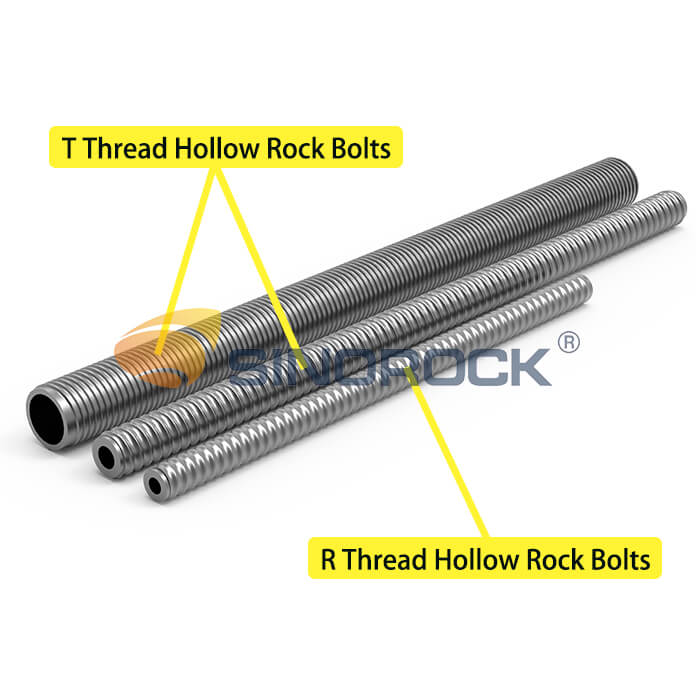
2. Drill Bit
The drill bit is an integral part of the self-drilling anchor system, designed to create a hole as well as the rock bolt is being installed. The drill bit's configuration varies based on the geological conditions and the desired anchoring depth. According to the presence or absence of tungsten carbide, drill bits can usually be divided into two main categories: hardened drill bits and tungsten carbide drill bits.
3. Nut and Plate
The nut and plate are installed at the end of the self-drilling anchor system. The nut prevents deformation of the rock by applying preload to transfer the anchoring force from the hollow anchor bar to the plate and compressing the plate to the rock face. According to the shape, the plate can be divided into the domed plate and the flat plate.
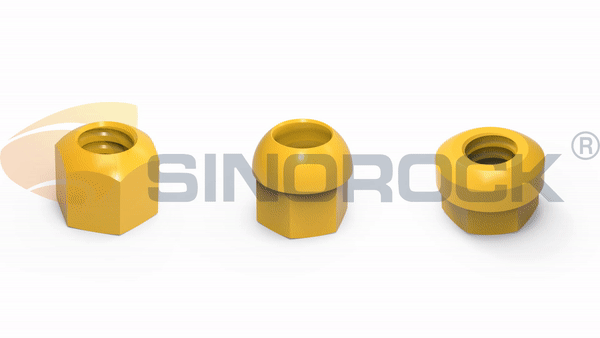
4. Coupler
Self-drilling rock bolts often include a coupling mechanism at one end. The coupler allows for the connection of multiple hollow anchor bars, enabling the formation of longer and more continuous rock reinforcement systems.
5. Centralizer
The centralizer's main function is to maintain the proper alignment and position of the anchor bolt during installation. It keeps the slender hollow anchor bar running smoothly when the hollow anchor bar is rotating at high speed in the hole so that the axis of the drill bit is as close as possible to the centerline of the drill hole. It ensures proper alignment and facilitates the drilling process.
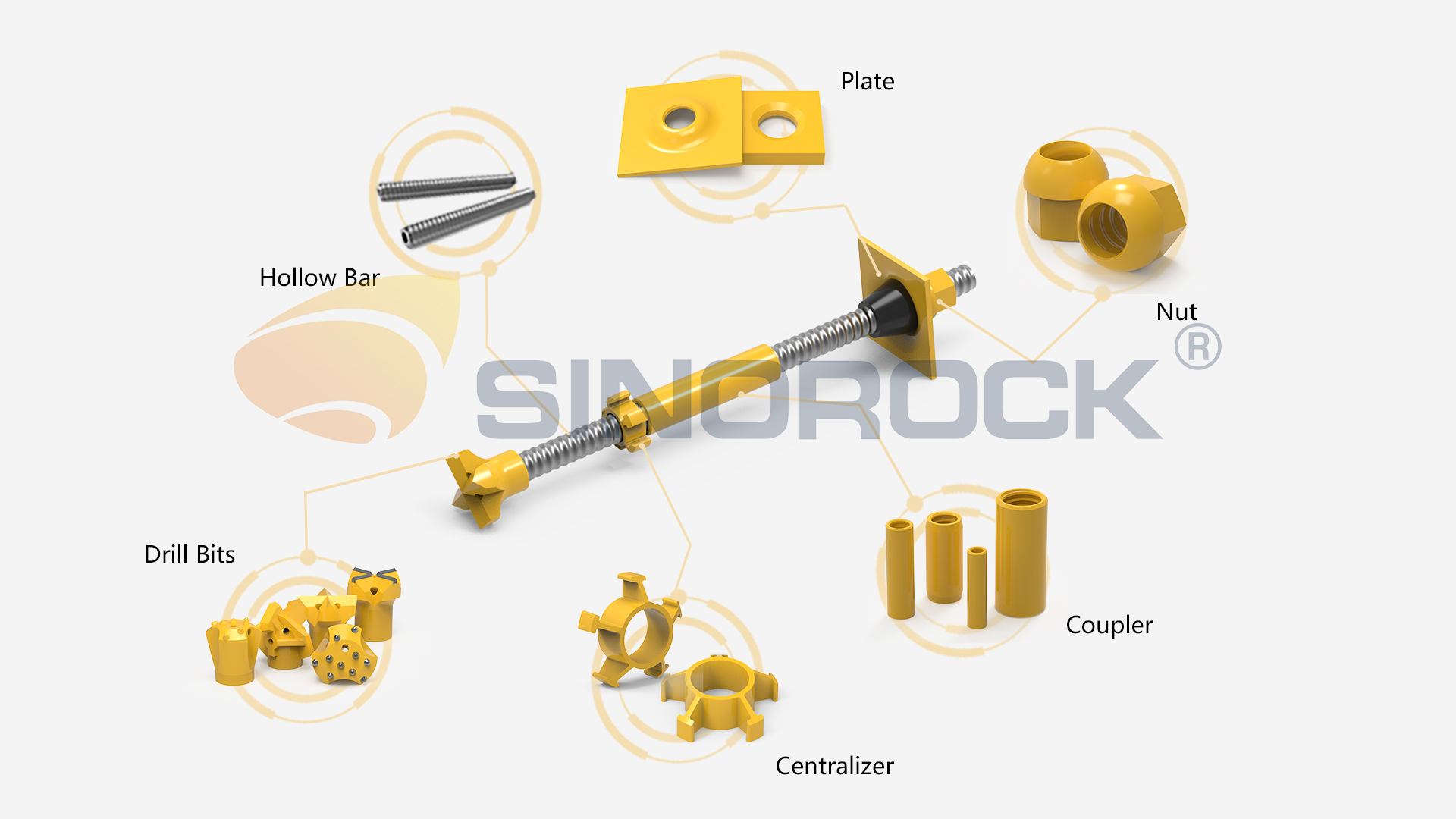
Factors to Consider When Selecting Self-Drilling Anchor Bolts
1. Project Location and Geology
Geological conditions play a pivotal role in determining the type of self-drilling anchor bolts required. The geological survey report provides essential information about the project's geology, including soil types, rock fragmentation, hardness, weathering, and layering. Understanding these factors is critical to selecting the right drill bit size. For rocky terrains, smaller size drill bits are preferable to enhance cement penetration into crevices. In contrast, soil-based projects require larger drill bits for better bonding between soil and cement. In the absence of a survey report, visual cues from geological photos or regional geological tendencies can provide guidance.
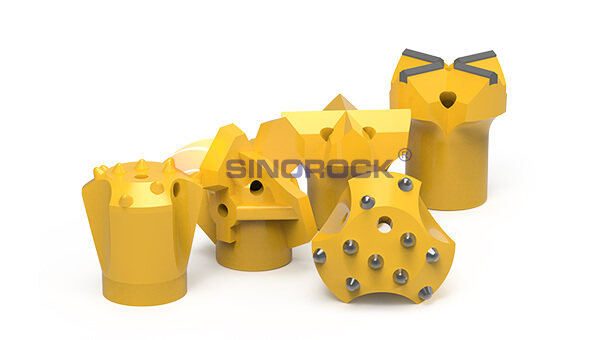
2. Stratigraphic Conditions
Assess the potential for hole collapse or difficult hole formation during construction. If such issues are absent, traditional steel bars or strands might be suitable due to their cost-effectiveness. However, when facing challenging hole conditions, self-drilling anchor bolts offer advantages. These self-drilling anchor bolts combine drilling, grouting, and anchoring in one step, enhancing grouting effectiveness and bonding with surrounding rock mass, thus boosting load-bearing capacity.
3. Project Type
The nature of the project also influences the choice of self-drilling anchor bolts. High-stakes projects like schools, hospitals, and subways demand greater safety measures due to the risk of personal injury. For slope-related projects, such as pit slopes or highways, factors like cost, project status, and drilling medium (air or water) need careful consideration.
4. Design Program
The project's design program serves as a blueprint for selecting self-drilling anchor bolts. The design data includes geological information, project specifics, design options, and detailed drawings. In the absence of specific self-drilling anchor bolt design drawings, studying existing anchor rods or rebars can provide insights into drilling depth, diameter, and anchoring force requirements. The anchoring force requirement is paramount, as it directly influences the selection of self-drilling anchor bolts' tensile and yield strength. Different materials and diameters lead to varying strength levels, necessitating appropriate selection.
5. Equipment
The biggest investment in the project is the construction equipment, in the case of the existing construction equipment, construction equipment compatibility is essential for the successful installation of self-drilling anchor bolts. Understanding equipment specifications, such as stroke, compensation stroke, and output end thread specifications, is crucial. This information aids in determining the suitable self-drilling anchor bolt model, length, and shank adapter.
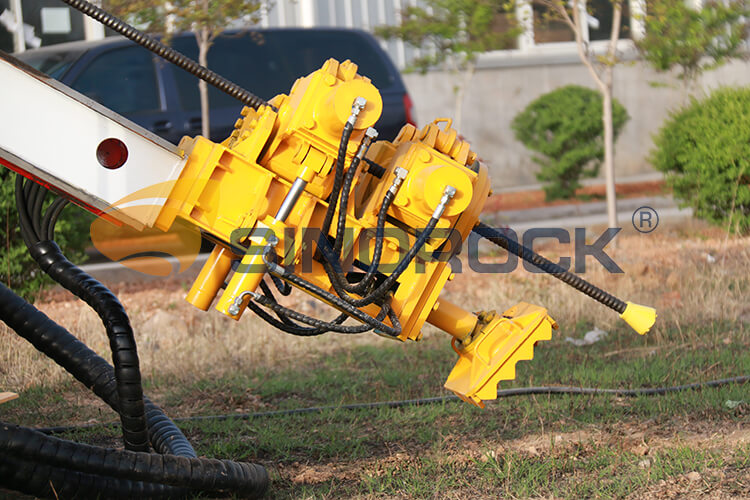
Conclusion
Selecting the right self-drilling anchor bolts requires a comprehensive understanding of geological conditions, stratigraphy, project requirements, and equipment compatibility. By considering these factors and understanding the fundamental components and types of self-drilling bolts, builders can confidently navigate the challenges associated with self-drilling anchor bolt selection, contributing to the success of their projects.
Sinorock's expertise in producing self-drilling anchor systems empowers builders to make informed choices, enhancing construction safety, efficiency, and stability. If you have any interest in self-drilling anchor systems, welcome contact us at sinorock@sinorockco.com.
latest news
-

- What Are the Applications of SDA Bolts in Hydropower Stations?
- Time:2025-08-21From:This Site
- Learn how self-drilling anchor bolts enhance slope stability, tunnel support, and dam reinforcement in complex geological conditions at hydropower stations. Optimize hydropower projects with efficient, cost-effective, and eco-friendly solutions.
- View details
-

- Slope Stabilization with SDA Bolts: Benefits & Applications
- Time:2025-08-19From:This Site
- Discover how self-drilling anchor bolts (SDA bolts) provide superior slope stabilization for highways, railways, and tunnels. Learn their key benefits, installation process, and real-world applications in loose or collapsible soils.
- View details
-

- How Self-Drilling Rock Bolts Enhance Tunnel Support in Fractured Rock?
- Time:2025-08-15From:This Site
- Discover how self-drilling rock bolts enhance tunnel support in fractured rock. Learn their benefits, installation steps, and real-world applications for safe, efficient tunneling.
- View details
-

- Sinorock 2025 Quality Month | Strengthening Quality Foundations, Empowering Product Excellence
- Time:2025-08-13From:This Site
- Sinorock’s 2025 Quality Month, themed “Strengthening Quality Foundations, Empowering Product Excellence,” successfully concluded, reinforcing our commitment to superior product quality.
- View details
-

- Sinorock Safety Month 2025 | Everyone Speaks Safety, Everyone Can Respond
- Time:2025-07-03From:This Site
- Sinorock Safety Month 2025, centered on the theme "Everyone Speaks Safety, Everyone Can Respond - Spot Workplace Hazards," has wrapped up successfully!
- View details
-

- Quality Control: the Vital Factor of A SDA Bolt Factory
- Time:2025-01-09From:This Site
- Sinorock’s comprehensive quality control system, from supplier management to outgoing inspections, ensuring the highest standards for self-drilling anchor bolts in construction.
- View details
-

- Sinorock Invites You to Explore Proven Self-Drilling Anchor Bolt Solutions at bauma 2025
- Time:2025-03-07From:This Site
- From April 7–13, 2025, explore Sinorock’s Self-drilling anchor bolt solution at Booth C2.513/4 in Hall C2 of the Messe München Exhibition Center (Munich, Germany).
- View details
-
.jpg)
- SINOROCK to Attend EXPOMINA PERÚ 2024 in Lima, Peru
- Time:2024-08-10From:This Site
- Sinorock to Attend EXPOMINA PERÚ 2024 in Lima, Peru
- View details
-
.jpg)
- SINOROCK to Participate in MINING AND METALS CENTRAL ASIA 2024
- Time:2024-08-08From:This Site
- SINOROCK to Participate in MINING AND METALS CENTRAL ASIA 2024
- View details
 Download
Download 


